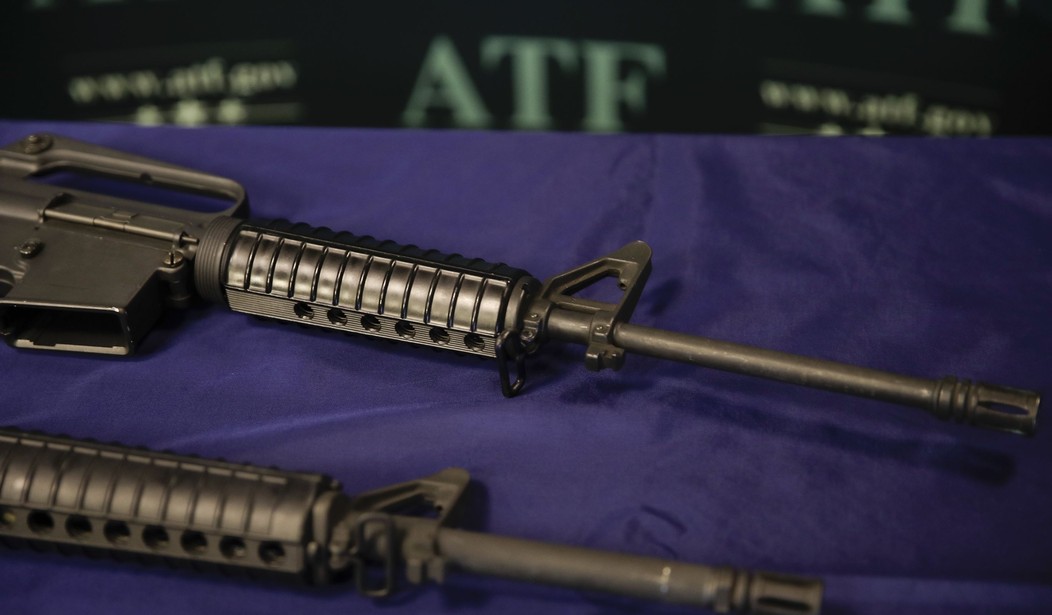The Supreme Court heard opening arguments in a challenge to the Biden administration's attempt to restrict unserialized, homemade firearms they like to call "ghost guns."
Unsurprisingly, the media is up in arms, presenting this as if it's the end times and that the Supreme Court has no choice but to allow the restrictions to hold up. Here's where the spin is oh-so-wrong.
First, let's look at the claims that these guns are commonly used in crimes.
This is being pushed as to why the ban must remain on the books, but the media push is full of a lot of claims that are prime examples of "lying with facts."
One prime example is the claim that so-called ghost guns showing up at crime scenes is up 1,000 percent.
Recommended
That sounds scary, but they leave out an awful lot. For example, Slate cited the federal study in a recent piece.
Last year, a federal report revealed that the use of ghost guns in crimes has risen more than 1,000 percent in recent years. Can you talk about the sudden proliferation of these guns and their impact on violent crime?
Back in 2017 and 2018, law enforcement was recovering 1,000 or maybe 2,000 of these ghost guns nationwide. We saw the number of recoveries start to jump around 2019, and by 2021, the number had risen to 19,000. By 2022, law enforcement was recovering something like 25,000 of these ghost guns at crime scenes across the nation. The industry’s business model is fundamentally premised on circumventing gun laws, selling to people who otherwise could not purchase firearms. We’re talking about violent felons, minors, and domestic abusers, who can go online and buy “a pistol in a box,” which is the term the industry used to describe these kits. Not surprisingly, these became the weapon of choice for people who couldn’t get their hands on a firearm legally and wanted to put them to ill use.
Now, that sounds like a lot, but let's add some perspective to this.
For example, there were 14,000 homicides in 2022. That doesn't count all the other crimes, so while it looks like there were more "ghost guns" than murders, not all of those involved unserialized firearms. Instead, we need to look at violent crimes as a whole. We don't have official numbers for 2022, but in 2019, the FBI reported just under 1.2 million violent crimes in total. If every single unserialized gun was connected to a violent crime, then that accounts for about two percent of them.
Only, the official report says "crime scenes," which may well mean violent crimes. It would also include a cop seeing a known felon with a suspicious bulge and discovering a gun that had literally never been fired. It includes a raid for tax evasion finding someone's unserialized gun.
And let's keep in mind that there are probably millions of these guns in the hands of law-abiding citizens.
So by no metric are these particularly commonly used in crime. It just feels that way because the media has a profound tendency to report any case with a so-called "ghost gun." That, however, should be a tell. If it were particularly common, they wouldn't say anything because it wouldn't be news.
One thing the media repeatedly misses is that part of the issue here is how these restrictions came about.
As the Second Amendment Foundation has noted, the definition of a firearm was laid down by Congress in the Gun Control Act of 1968. With this effort, though, the ATF tried to redefine it at the direction of the Biden administration. It doesn't have the authority to do so. That was made abundantly clear when the agency was smacked down over redefining "machine guns" so as to ban bump stocks, which was overturned in the Cargill decision.
That is repeatedly omitted from most coverage of the case.
At its heart, this is a case of bureaucratic overreach, not gun control.
Yet, even if it were, recent precedent doesn't exactly work for the gun-grabbers.
The Bruen decision is pretty clear about there needing to be a historical analog for a law before it can be considered constitutional. Well, people were building guns all the time back then, and guess what? Not a single law against it anywhere on the books.
Over the next days and weeks, we'll see a ton about this case.
Most of it will be lies, misinformation, and ignorance prancing around and presenting itself as expertise.

























